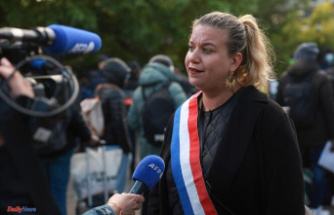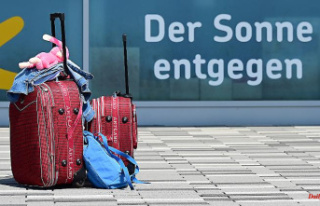In Estonia, after Russia's attack on Ukraine, a debate has flared up about the whereabouts of Soviet monuments. The focus is on a tank near the border town of Narva. The city administration has long avoided making its own decision. Now the future of the monument is certain.
In Estonia, authorities have dismantled and relocated a controversial Soviet tank monument near the Estonian-Russian border town of Narva. By government order, workers removed the war relic with heavy equipment and took it with a heavy-duty truck to the Estonian War Museum, a good 200 kilometers away north of the capital Tallinn. In addition, according to a radio report, six other monuments from the Soviet era have disappeared from the cityscape of Estonia's third largest city.
The government in Tallinn had previously given the go-ahead for the removal of Soviet monuments from public spaces in the Baltic EU and NATO country. "As symbols of repression and Soviet occupation, they have become a source of increasing social tension - in these times we have to keep the risk to public order as low as possible," Prime Minister Kaja Kallas explained the decision, which was also supported by President Alar Karis.
A public debate erupted in Estonia after Russia's attack on Ukraine over the monuments. The main focus was on the now dismantled Soviet T-34 tank near Narva in the east of the country. It stands at the point where the Red Army crossed the Narva River during World War II and drove the German troops out of the city. There was resistance among the residents to the dismantling of the tank, which was carried out under police protection and, according to the authorities, went without major incidents.
The city's administration, whose population is more than 90 percent ethnic Russian, had previously avoided making a decision about the future of the monument, unveiled in 1970. That's why the government made its decision, which Kallas says has also been explained to key allies. Russia had previously protested against the plans.
Estonia was alternately occupied by the Soviet Union and Germany during World War II. After the end of the war, the Baltic state remained an involuntary part of the Soviet Union until 1991. To date, around a quarter of the population are ethnic Russians, who often also have family ties to Russia. According to polls, there is some support among them for the course taken by Russian President Vladimir Putin and his war of aggression against Ukraine.












